When discussing the evolution of professional bodybuilding, one name stands above the rest as a true paradigm shifter: Ronnie Coleman.
With eight consecutive Mr. Olympia titles (1998–2005), a physique so massive it was once dubbed “The Real-Life Hulk,” and a work ethic immortalized by iconic catchphrases like “Yeah Buddy!” and “If it don’t challenge you, it don’t change you,” Coleman didn’t just win titles.
He changed the game forever.
Ronnie Coleman redefined what was physically possible in bodybuilding, pushing the sport into a new era of extreme size, conditioning, and intensity.
His influence reshaped training, nutrition, competition standards, and even the public perception of bodybuilding.
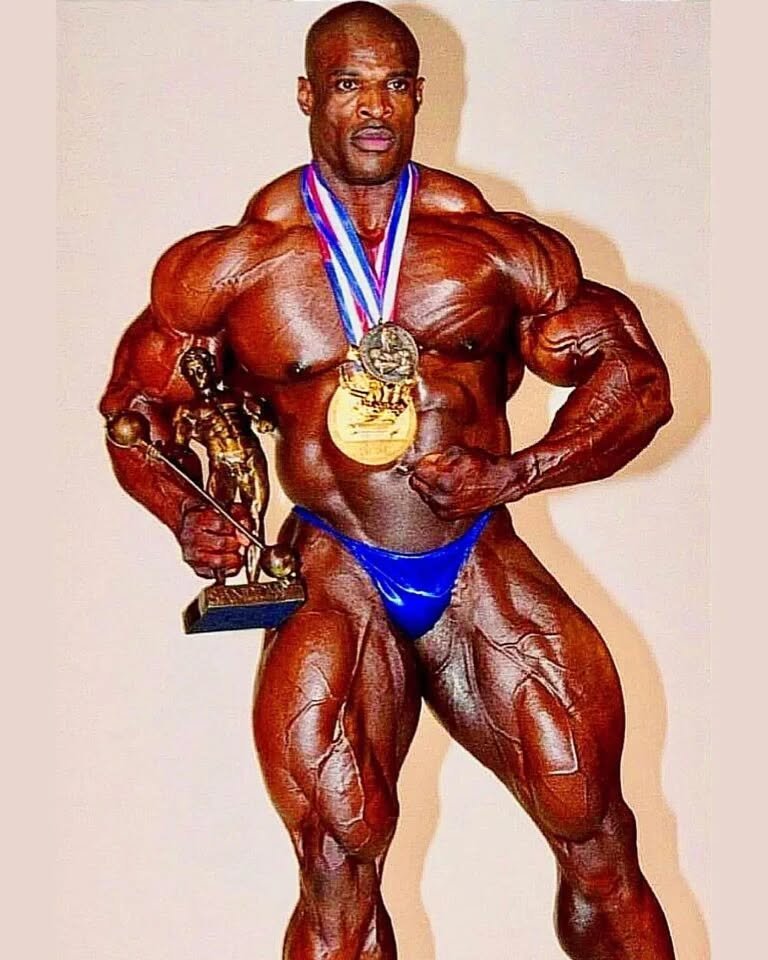
🏆 The Era Before Coleman: Bodybuilding in the 1990s
Before Ronnie Coleman’s rise, the sport was dominated by athletes like Dorian Yates, Lee Haney, and Shawn Ray—men known for symmetry, aesthetics, and muscular density.
The standard for greatness was proportion over mass.
While size was important, the emphasis was on:
- Muscle flow
- Pose control
- Conditioning
- Stage presence
The 275–285 lb range was considered elite.
Then came Ronnie Coleman—a 300+ pound force of nature who rewrote the rules.
💥 The Coleman Effect: A New Standard of Size and Strength
Ronnie Coleman’s impact on bodybuilding can be summed up in one word: scale.
He didn’t just add muscle—he expanded the limits of human mass.
🔹 Before Coleman:
- Mr. Olympia winners averaged 270–290 lbs
- Emphasis on lean, aesthetic physiques
- Training focused on moderate volume, controlled intensity
🔹 After Coleman:
- Winners now average 300–330+ lbs
- Mass became king
- Size + conditioning became the new gold standard
Coleman’s competition weight of 290–310 lbs, combined with sub-4% body fat, set a new benchmark for the Men’s Open division.
“He wasn’t just big. He was big and dry—a combination no one had seen before.”
His 800-pound squat, 800-pound deadlift, and 500-pound bench press weren’t just gym flexes.
They were statements.
“This is what it takes to win.”
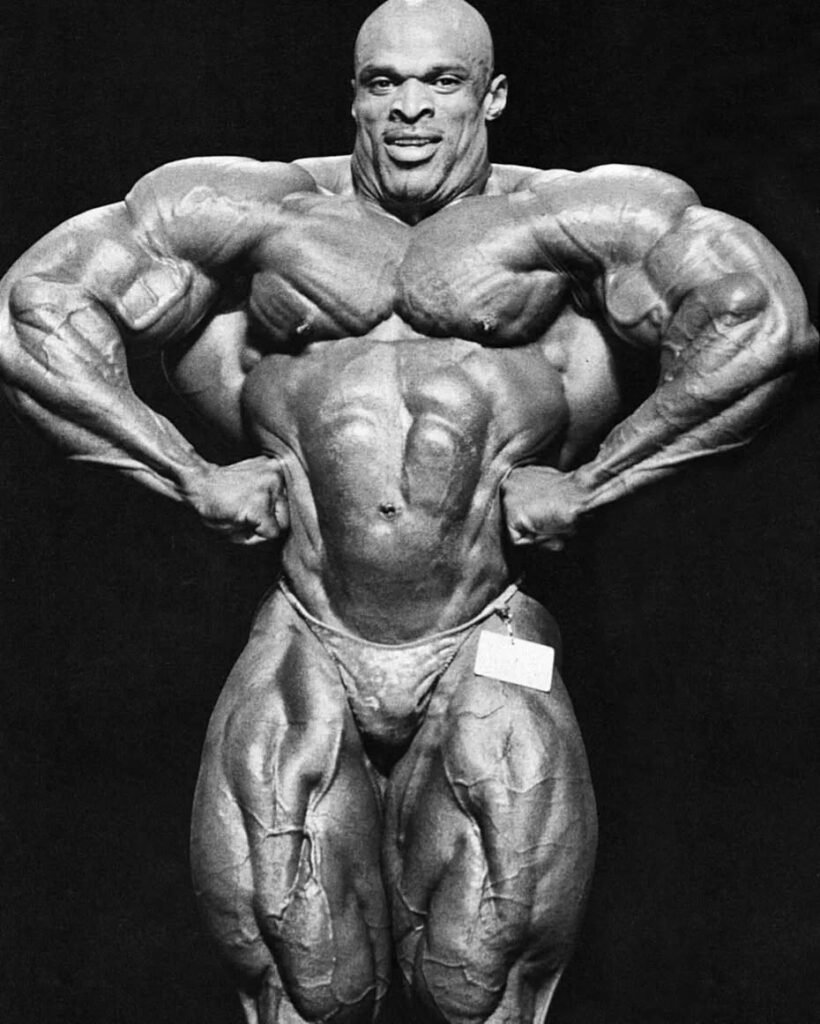
🏋️♂️ Revolutionized Training: Heavy, Hard, and Relentless
Ronnie Coleman didn’t train like most bodybuilders.
He trained like a powerlifter with a bodybuilder’s goal.
His legendary workouts, captured in the documentary “The Cost of Winning,” featured:
- Extreme weights (800+ lbs squats for 8 reps)
- High volume (20+ sets per muscle group)
- Minimal rest (60–90 seconds between sets)
- Full-body intensity (training 6–7 days/week)
🔹 Signature Coleman Workout Principles:
- Progressive Overload: Always adding weight
- Time Under Tension: Controlled reps, full range of motion
- Mind-Muscle Connection: “If you don’t feel it in the muscle, you’re just moving weight”
- No Ego Lifting: Technique over showmanship
His training videos went viral before viral existed, inspiring a generation to lift heavier, train harder, and suffer more.
“Everybody wants to be a bodybuilder… but don’t nobody want to lift no heavy-ass weights.”
This philosophy became the blueprint for modern bodybuilding training.
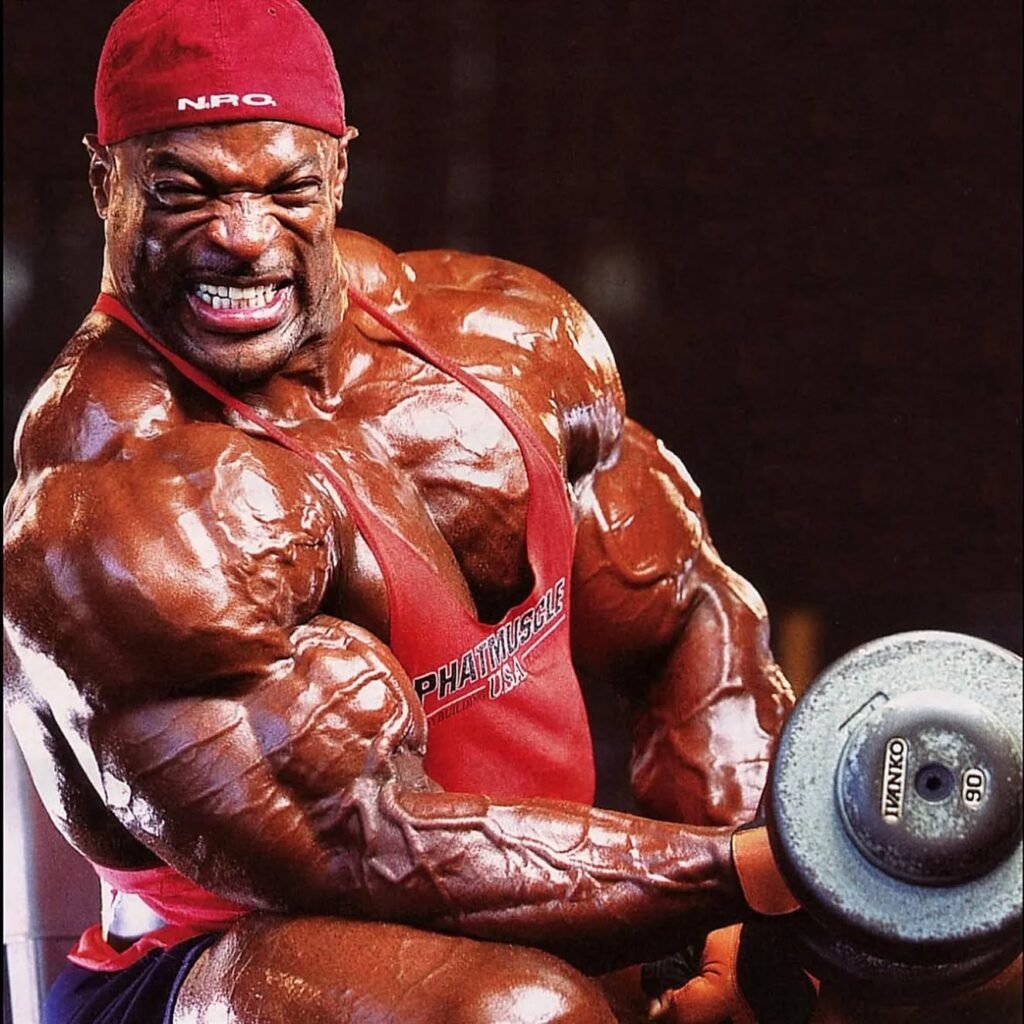
🍽️ Nutrition: The Birth of the 500g Protein Diet
Ronnie Coleman didn’t just train differently.
He ate differently.
His diet was astronomical—even by today’s standards.
- 6 meals per day
- 1 pound of chicken + ½ cup rice per meal
- Total protein intake: 400–500g/day
- Calories: 6,000–8,000 kcal (off-season)
He famously said:
“I put on 5–10 pounds of muscle a year… from all that heavy lifting and a lot of eating.”
This high-volume, high-protein, whole-food approach became the standard for elite bodybuilders.
He didn’t rely on fast food or junk—just lean meats, complex carbs, and consistency.
“You kind of get used to it. When you eat like that, you get hungry every three hours.”
Coleman’s diet proved that extreme mass requires extreme nutrition—and he lived it.
🌍 Popularized Bodybuilding in the Digital Age
Before YouTube, Instagram, and TikTok, bodybuilding was a niche sport.
Ronnie Coleman brought it into the mainstream.
His training videos, uploaded to early platforms like YouTube and Bodybuilding.com, gained millions of views.
- Clips of his 800-pound squats were shared globally
- His catchphrases became memes and motivational quotes
- His lifestyle (police officer by day, champion by dedication) inspired millions
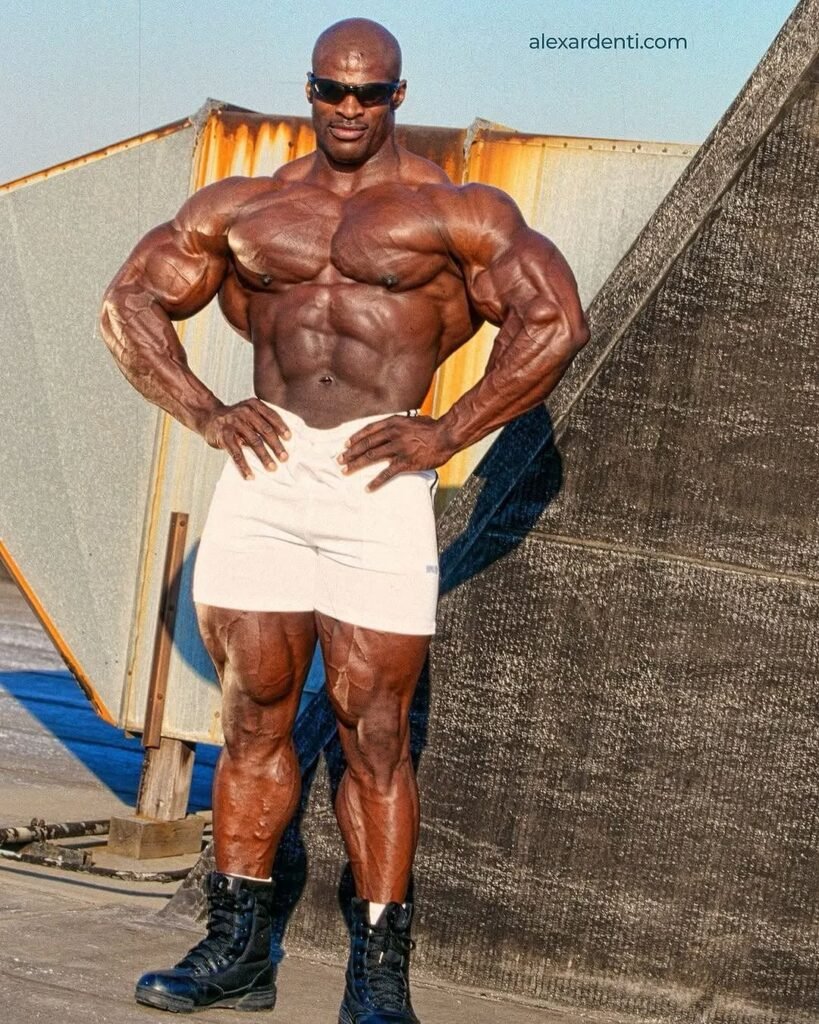
He became a cultural icon—not just in fitness, but in pop culture.
“Yeah Buddy!” is now a universal phrase of triumph.
Coleman was one of the first bodybuilders to leverage digital media to build a personal brand—paving the way for influencers like Chris Bumstead, Hafþór Björnsson, and MrBeast.
🧠 Changed the Mindset: Pain, Suffering, and Mental Toughness
Ronnie Coleman didn’t just change how bodybuilders trained.
He changed how they thought.
His philosophy was built on suffering, sacrifice, and self-belief.
“The pain you feel today will be the strength you feel tomorrow.”
He normalized:
- Training through pain
- Pushing past failure
- Embracing discomfort
This warrior mentality became the new standard for elite athletes.
“If it don’t challenge you, it don’t change you.”
This quote—uttered in a 2001 interview—has become one of the most quoted lines in fitness history, appearing on:
- Gym walls
- T-shirts
- Social media
- Motivational videos
Coleman taught the world that greatness isn’t comfortable.
⚠️ The Cost of Greatness: Injury, Surgery, and Legacy
Coleman’s legacy isn’t without controversy.
His extreme training and mass came at a physical cost:
- Over 13 surgeries (back, neck, hips, shoulders)
- Near-death sepsis scare in 2025
- Chronic pain and mobility issues
In a 2023 interview, he said:
“Would I do it all again? In a heartbeat. I became the greatest bodybuilder of all time. No regrets.”
This unapologetic stance sparked debate:
- Was he a legend or a cautionary tale?
- Did he glorify self-destruction?
But Coleman’s message was clear:
He knew the risks. He accepted them. He lived his dream.
And in doing so, he forced the industry to confront the real cost of elite bodybuilding.

🏛️ Institutional Impact: How Coleman Influenced the IFBB
Ronnie Coleman’s dominance forced the IFBB (International Federation of BodyBuilding & Fitness) to redefine judging criteria.
Before Coleman:
- Judges favored aesthetics, symmetry, and proportion
- Mass was secondary
After Coleman:
- Size became a prerequisite
- Conditioning + mass became the new formula
- The Men’s Open division shifted from “bodybuilder” to “superhuman”
Coleman’s wins validated a new era—where only the biggest and hardest could compete.
“You can’t win if you’re not 300 pounds and shredded.”
This shift led to the decline of the “aesthetic” bodybuilder and the rise of the mass monster.
🔮 The Coleman Legacy: Who He Inspired
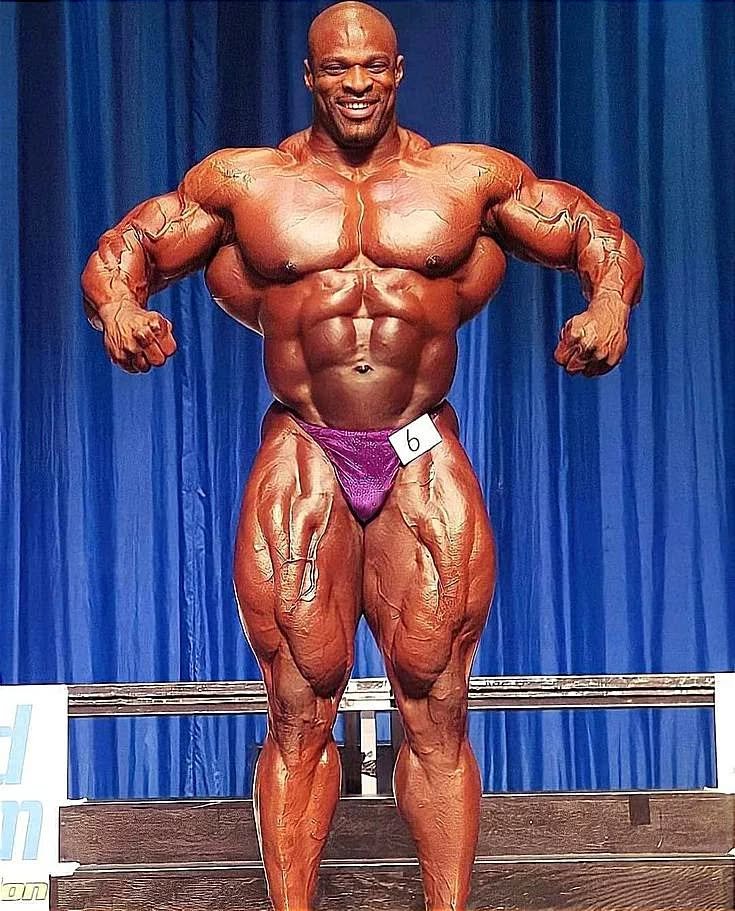
Ronnie Coleman’s influence can be seen in every top bodybuilder today.
Athletes Who Follow His Blueprint:
- Samson Dauda – Massive size, full quads, dominant presence
- Hadi Choopan – Grainy conditioning, relentless work ethic
- Nick Walker – Freak genetics, 800-pound squats
- Derek Lunsford – High volume, symmetry + mass
- Big Ramy – 300+ lbs of muscle, stage dominance
Even Chris Bumstead (Classic Physique) cites Coleman as an inspiration for his work ethic and discipline.
“Ronnie showed us what’s possible.”
🔥 Final Thoughts: The King Who Changed Everything
Ronnie Coleman didn’t just win eight Mr. Olympia titles.
He transformed bodybuilding.
He changed:
- How athletes train (heavy, high volume)
- How they eat (massive protein, whole foods)
- How they think (pain = progress)
- How the world sees the sport (from niche to global phenomenon)
He was more than a champion.
He was a revolution.
And while the sport continues to evolve—with new stars, new standards, and new challenges—every step forward is taken on ground Ronnie Coleman paved.
Because when he stepped on stage…
He didn’t just win.
He changed the game.
And that’s why, decades later, we still say:
“Yeah Buddy.”
